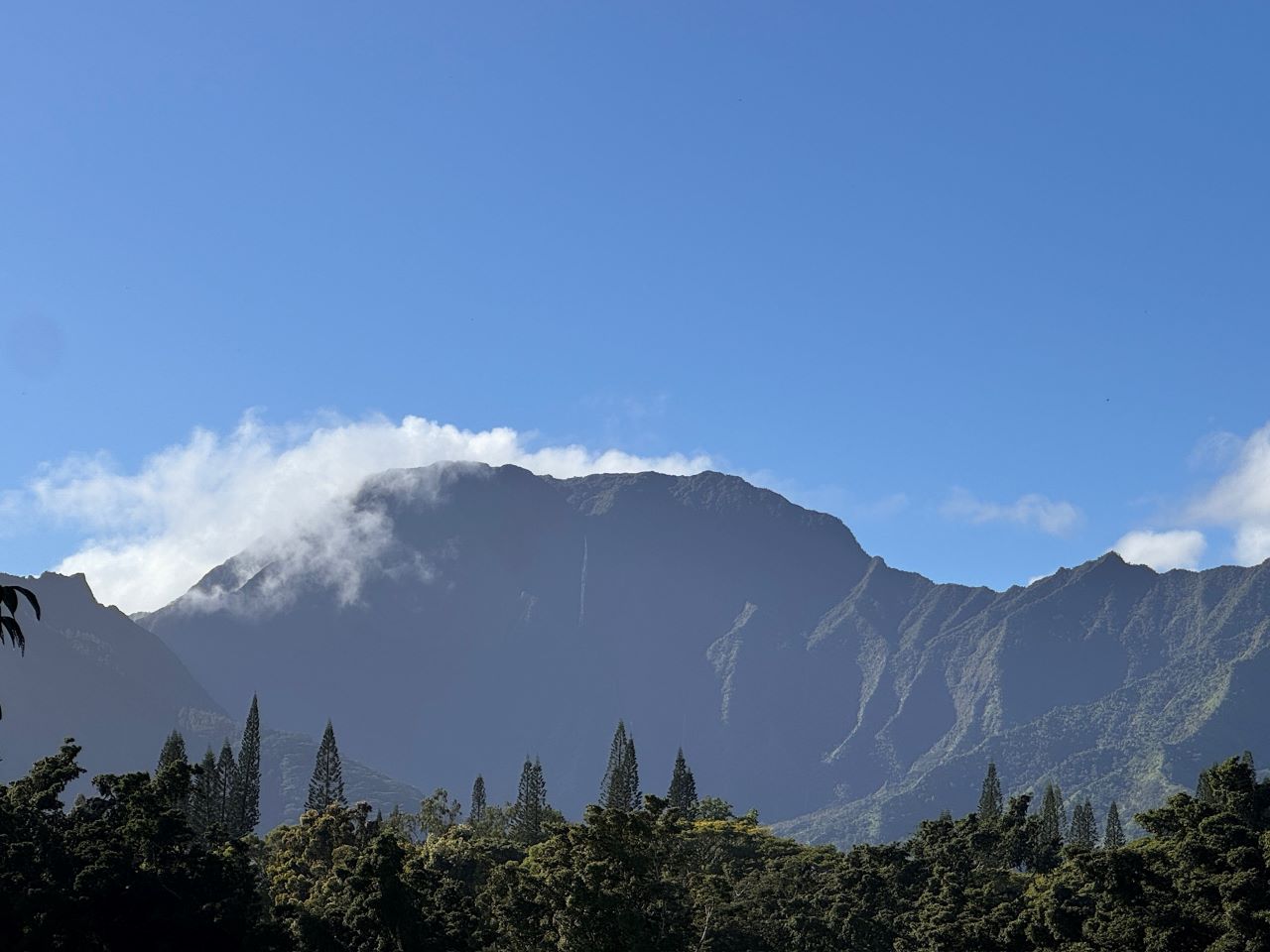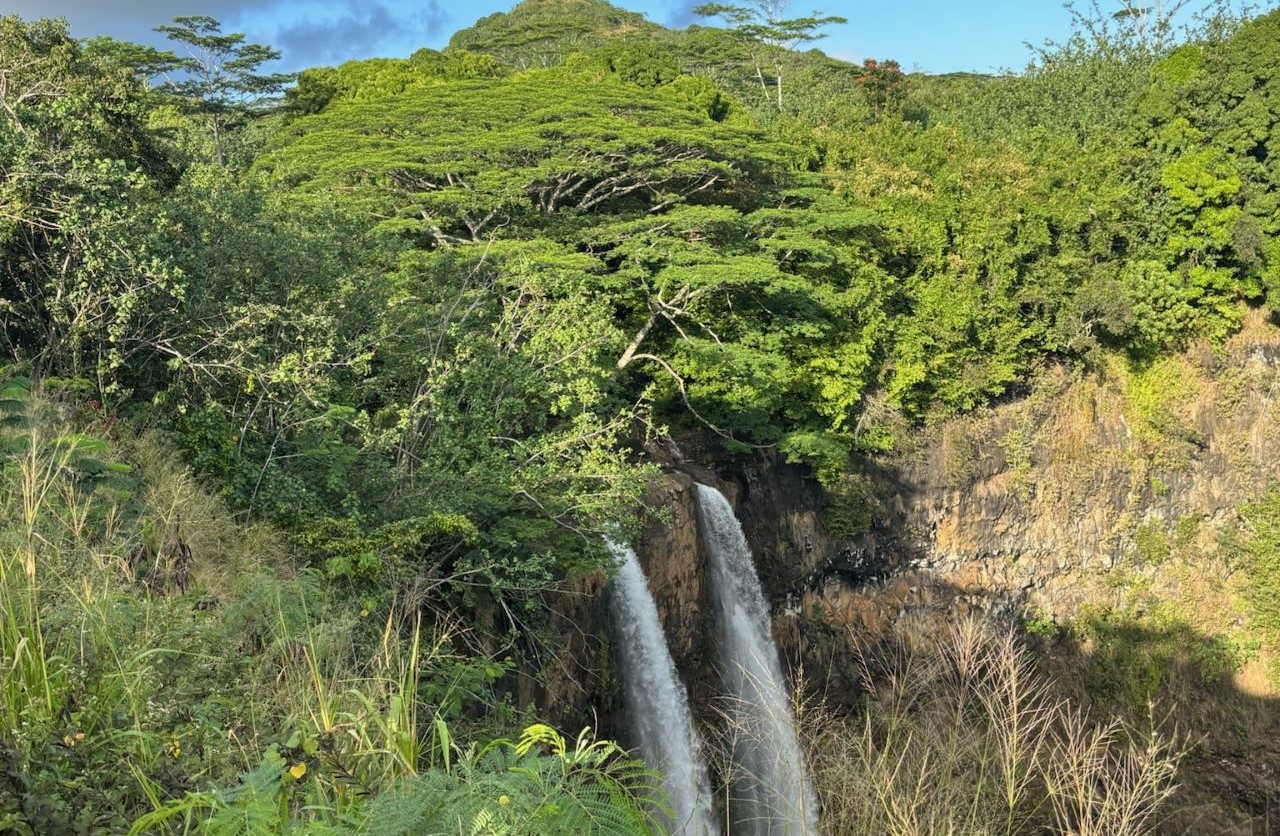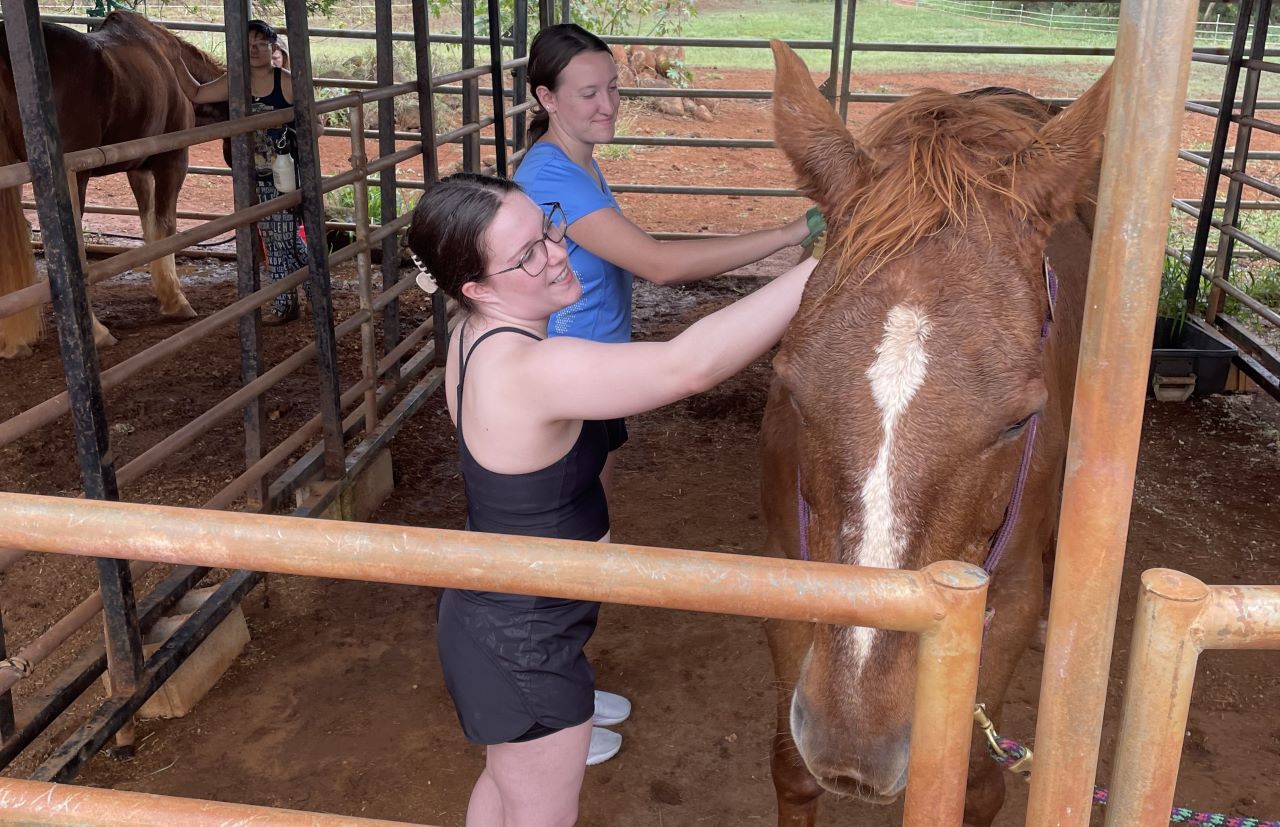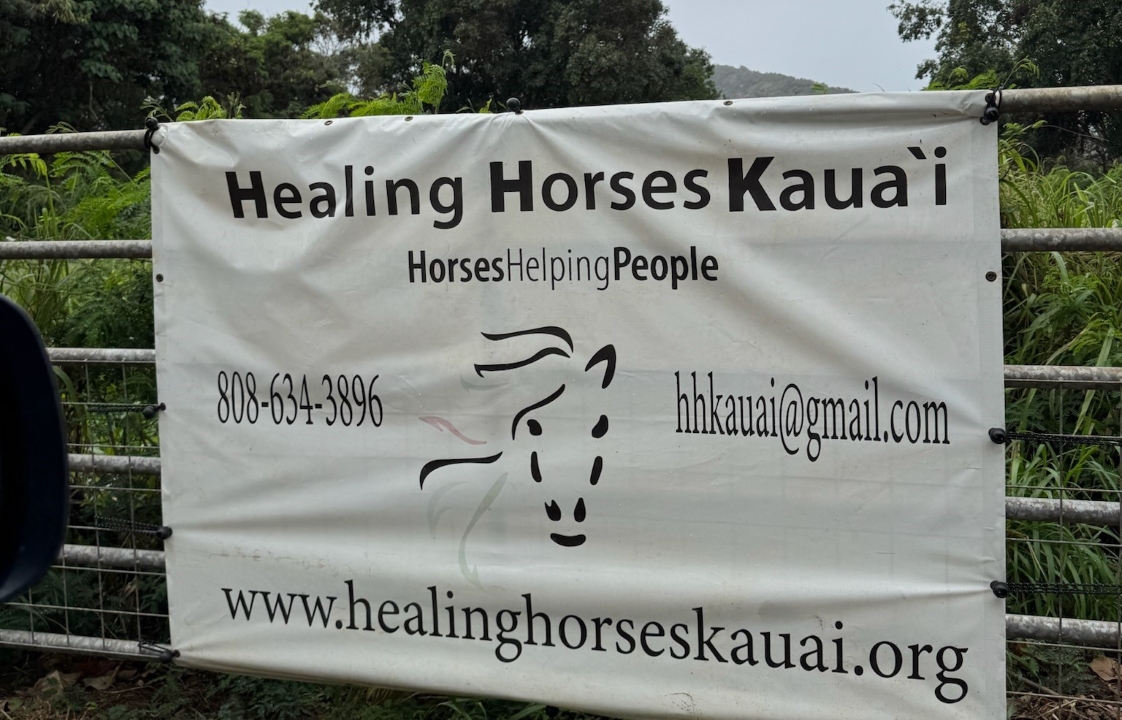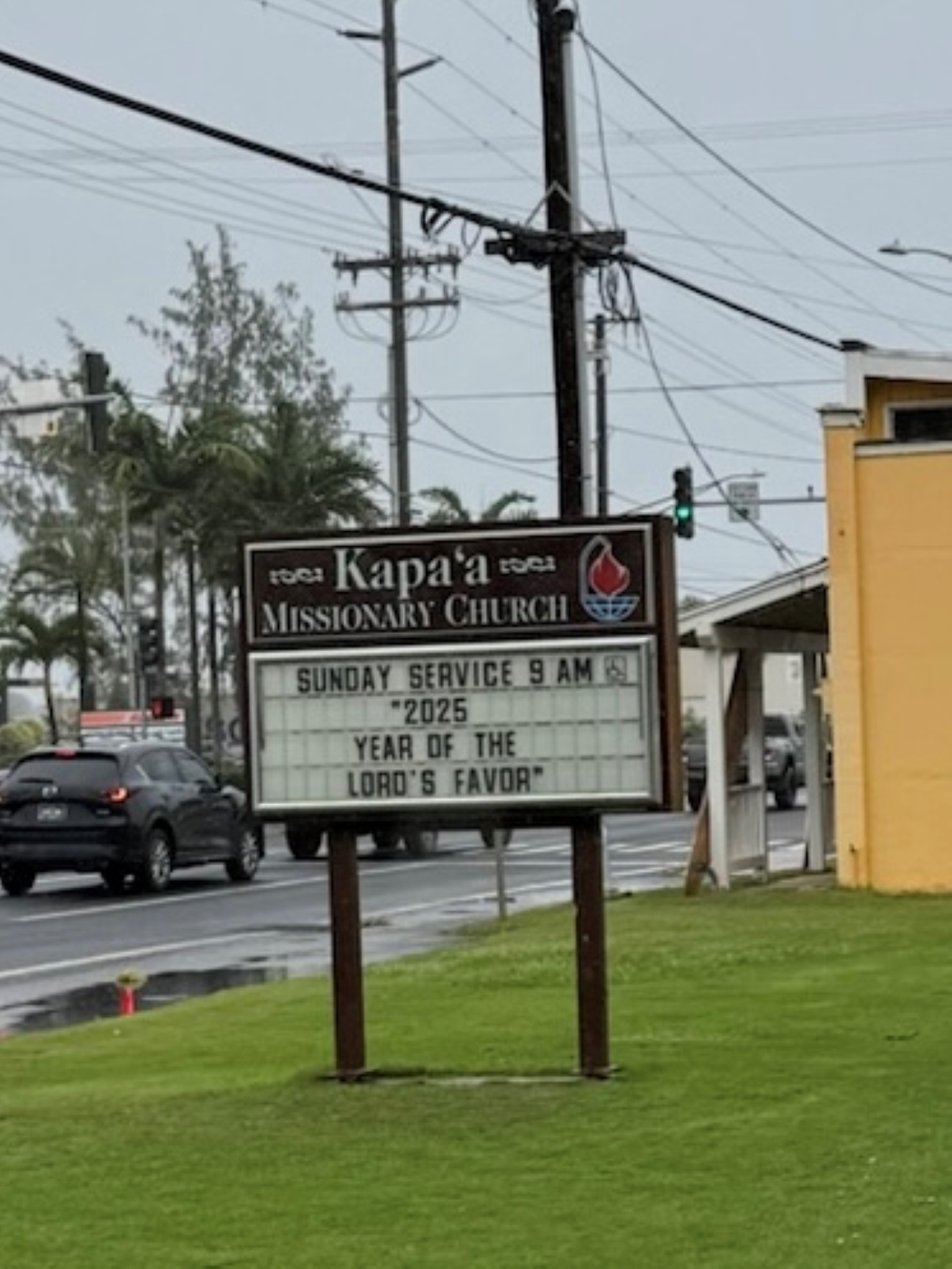OT Students Demonstrate 'Kokua' in Hawaii During Intersession

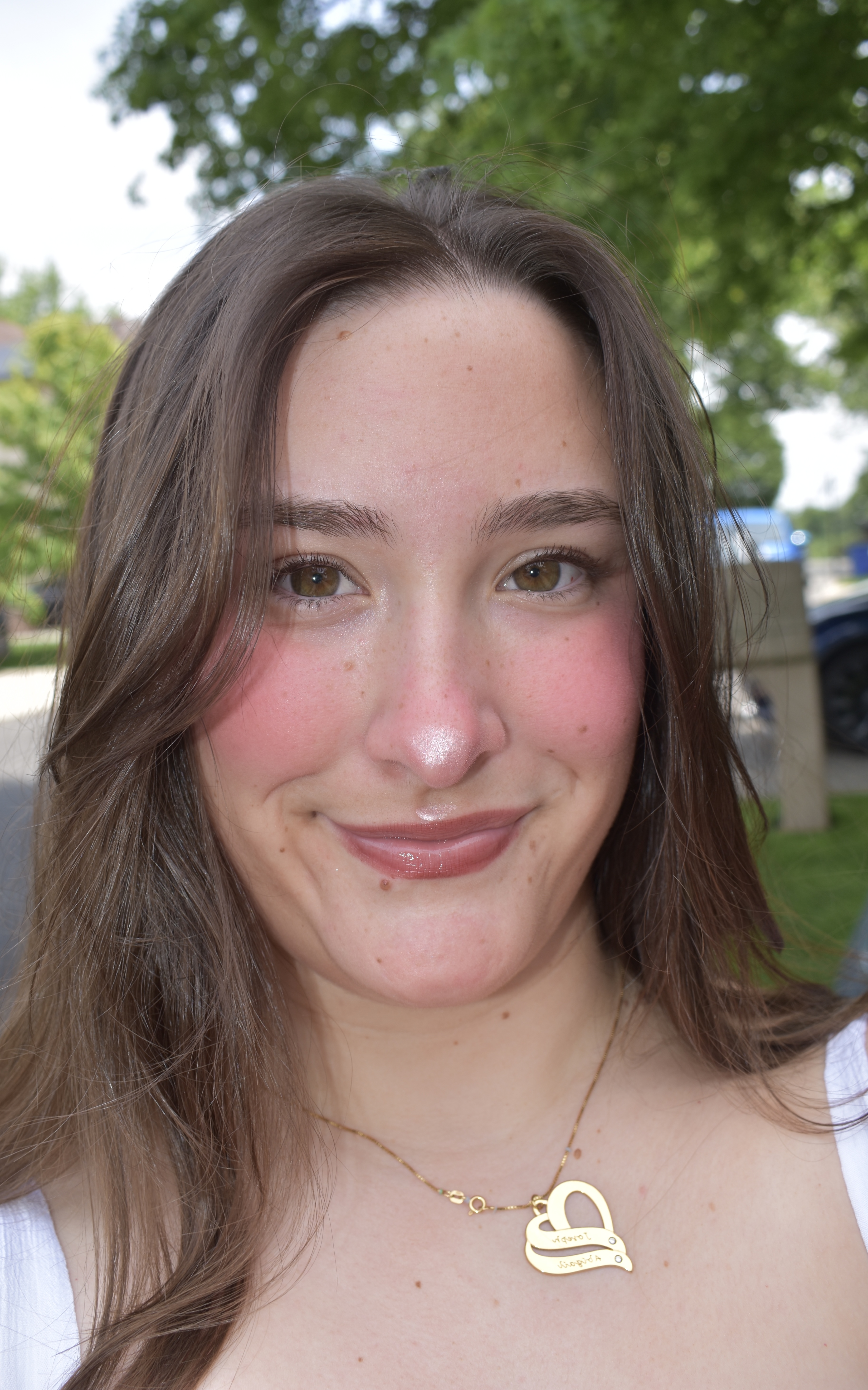
During an Intersession visit to Hawaii, occupational therapy student Abigail Gillen '25 and her fellow Royals gained experience in their field and gave back to the community in Kaua'i. Gillen said in the process she recognized a concept there that mirrors the values she learns at The University of Scranton: Kokua, a help that expects nothing in return.
"When I learned what it (Kokua) meant, I instantly thought of the Jesuit/Ignatian values: being men and women for others, finding God in all things, the service of faith and the promotion of justice."
Gillen, an occupational therapy student from Staten Island, New York, is one of eight seniors who recently participated in an OT Level 1 Fieldwork trip to Hawaii facilitated by Dr. Lisa Kozden and Dr. Courtney Lancia, Occupational Therapy Department faculty. Students included: Gillen, Julia Diorio, Jules Nocentino, Jill Orr, Ashley Blitzer, Justin Matzner, Tara Renda, Loren Glover.
Gillen shares experiences from the Intersession 2025 fieldwork in Hawaii.How did you become involved and what was your role?
I became interested in the trip as soon as I heard about it. Honestly, who wouldn’t want to complete their fieldwork in such an incredible place? I completed the application, practiced over and over for my interview, and cried happy tears when I got the email saying I was accepted.
For a year we raised money to lower the cost for the students. We did snack sales, shirt sales, and tried to get as creative as we could. We made group T-shirts to match in the airport, and we all attended monthly meetings to prepare for the trip and learn about the Hawaiian culture and their access to healthcare.
What were some of your goals for the trip?
As a group, we wanted to be immersed in culture, educate some of the locals about our program and occupational therapy in general, and do as much good as we could in the short time we were there. Personally, I was really excited for my clinical placement at Island Hand Therapy in Lihue, Kaua’i. My clinical supervisor was Catherine Petterson, OTR/L, CHT, who grew up on Kaua'i. I felt so prepared by Dr. Kozden in our hand therapy course that I was confident and ready to go. What I didn’t expect was that I’d learn so much more from the locals and patients than I could ever teach them. Everyone was optimistic and wise, especially the older adult clients who I saw. I came back from Hawaii with important life lessons and inspirational people in mind. People were so amazed when they heard what we came to do and how far we traveled to get there.
Please share some location and program highlights from your time in Kaua'i, Hawaii.
We saw Hawaiian Monk Seals and Honu Turtles at Poipu Beach on a free day. It was the first time I had ever seen a seal in real life, so it was cool! There were also wildlife protection teams for each animal group that usually hangs out on the beach. The community's concern for all beings is admirable and something I wish we could incorporate more here.
The group volunteered at Healing Horses Kaua’i (an equine therapy facility for adults and children with various needs.) They got to help groom some of the horses and observe a treatment session. At Missionary Church Food Pantry the group helped bag foods that were going to be donated to families experiencing food insecurity.
We attended a luau at Luau Kalamaku and multiple farmers markets, where we got to try a lot of local fruit, foods, and even fresh coconut milk. We supported local artists and farmers at the markets.
We took a tour of the island's irrigation canals that included caves and tunnels, it was a fun and educational way to experience the outdoors. It was also the one day that we experienced a Kaua'i rainstorm! Luckily, we were still able to complete the tour in our tubes and we got to see so many different colors of clay that make up the sides of some of the canals.
One of my highlights from fieldwork was connecting with the patients at the clinic and being able to explain occupational therapy to them. We have to remind ourselves sometimes how unique and necessary our profession is, and how if you show people what you can help them do for their life they will listen!
What surprised you most about the trip?
The physical and spiritual environment. There is no way to prepare for the out of this world feeling that the mountains and trees of Kaua’i exude. It is impossible to describe. ...That feeling is Aloha! It is love, positive energy, the importance of being around the ones you love. I learned over the course of the trip that what is meant for you will come. If it’s not, it’ll pass. There were so many moments that we had to think on our feet, plan quickly, or even change plans at the last minute. However, I truly believe that we had the exact trip we were meant to, we had amazing weather, met amazing people, and did so many things that I would consider once in a lifetime for many people.
I was also surprised about the amount of hand therapy that was being provided on the island. You could count on one hand the amount of occupational therapists on the island, but there was no shortage of clients in need - especially in hand therapy. People’s hands are their livelihood, and this clinical showed me that in real life.
Are there any details you'd like to share that I haven't asked about?
There is a saying on a lot of signs in restaurants and parks: “Mahalo for your Kokua.” It means thank you for your help. It’s simply asking you to clean up after yourself and keep the environment clean. Kokua is a help that expects nothing in return. When I learned what it meant, I instantly thought of the Jesuit/Ignatian values: being men and women for others, finding God in all things, the service of faith and the promotion of justice. It was an aha moment of sorts. It turned into a conversation among our group about what helping looks like. The difference between helping people in order to get something and helping for the sake of helping. If you’re only doing good for something in return, are you really doing any good? We had a lot of these conversations during the trip, and did a lot of reflection. I will carry what I learned in this trip through graduation and across my career as an occupational therapist.
Two students (Julia Diorio and Tara Renda) got the very rare opportunity to shadow a hand surgeon on the island in the operating room. It was interesting to talk with them about the entire experience. The patients who I saw were mostly weeks into their recovery, but the patients Julia and Tara saw were fresh in or out of surgery. Doing nightly group discussions was an amazing way to learn what the other students were seeing and as a way to help decompress some heavy or emotional topics that came along with speaking to so many patients.
At our one of our discussions we spoke about the Lifestyle Performance Model and the Kawa Model, which are both theoretical models that help lead occupational therapy services. We learned about the components of the models and discussed some of the clients we worked with through the lens of the models, without violating HIPAA. The Kawa Model in particular felt appropriate to discuss in Hawaii because of its comparison of one’s life to a river. Kawa means river. We spoke about our clients' life flow, river banks (supportive factors), rocks (challenges), driftwood (resources), and space to grow, which is where occupational therapists come in to provide intervention and assist clients to increase their occupational performance and balance.
I want to acknowledge the work that Dr. Kozden and Dr. Lancia have put into making this trip possible. They drove us all over an hour to our clinical placements each day and are just two amazing human beings. They’ve been there for me on some really difficult days, and now some of my best days. I also want to thank my clinical supervisor Catherine, and all the people from Kaua’i who welcomed us and taught us so much.
_____________________________________________________________________________________
Senior Abigail Gillen plans to complete fieldwork at Richmond University Medical Center in Staten Island and earn a master's degree in occupational therapy at The University of Scranton. She aims to launch a career in mental health or outpatient rehabilitation.


